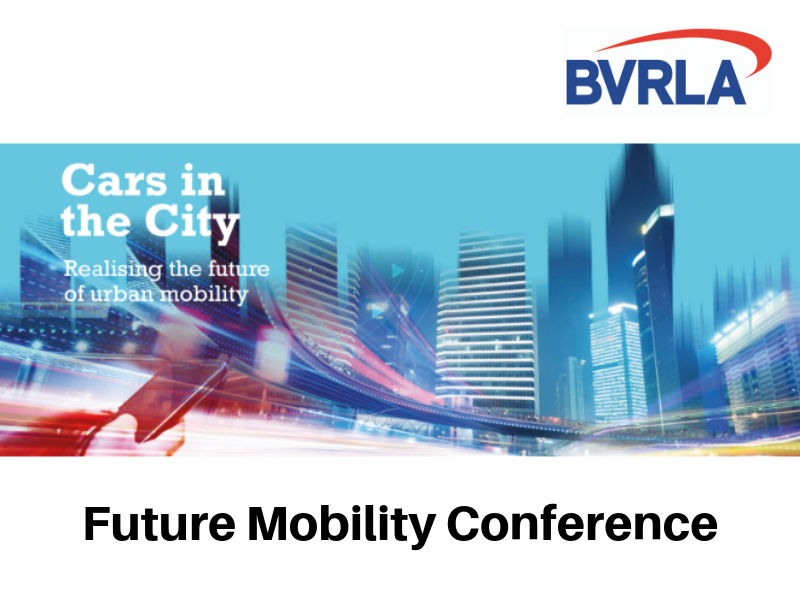18th July 2019
Key takeaways from the BVRLA Future Mobility Congress

Earlier this month we attended the BVRLA’s Future Mobility Congress in Birmingham. Delivering a packed agenda full of expert analysis and intelligent debate, the event provided vital insight to inform business strategy and deal with key operational issues around the subject of mobility.
So, after a busy day and some time to digest all the information, we’ve pulled together what we think were the key takeaways from the event.
- Cars are part of the mobility solution
At the Future Mobility Congress, the BVRLA launched their Cars in the City- Realising the future of urban mobility report, and it’s quite a refreshing read. Considering the market we are in, many reports or stories around mobility of the future highlight the need to reduce the number of cars on the road and increase the use of other modes of transport. The BVRLA report highlights simply ignoring the car, or attempting to push it out is not a viable approach. Instead we should be looking at strategies to change the way cars are used – from subscription services to car sharing amongst other new business models that are on the rise.
- We need to change behaviour to increase adoption
The UK Government has set its goals with its Road to Zero and Urban Mobility strategies, but in order to achieve these a lot of change is needed by us. Ask anyone in the room if they want to improve air quality or reduce their carbon footprint, the answer will more than likely be yes. However, in reality how many of us are actively doing something to change. Whether that is switching to an EV or Hybrid vehicle or using alternative modes of transport for certain routes, as a nation we generally are stuck in our ways.
Government, local authorities and businesses have an opportunity to help lead the way with change, providing people with different options that can not only help them understand the impact their vehicle or travel choice is having on the environment or their bank balance, but also highlighting other options they could choose.
As individuals, we need to think differently about transport. The convenience of a car for many still outweighs the benefits from different transportation methods.
- One-size doesn’t fit all
With Clear Air Zones starting to be implemented across the UK, one of the key takeaways from the BVRLA Future of Mobility Congress was the importance not to apply a one-size fits all sticker to each city. Understanding the needs of the audience is key, particularly to get buy in. As well as clear communication around the project from an early stage. It was highlighted by a number of speakers that businesses did not feel they were engaged with earlier enough to implement changes.
And for those that are not directly affected by the scheme on a day to day basis, they still need education on what Clean Air Zones are, and if they are visiting a city which has one, what the traffic signs actually mean.
Read our factsheet to understand what the various Clean Air Zone traffic signs mean for drivers.
4. MaaS for businesses
With the road to zero under way, we are already starting to see a shift in the mobility landscape, with members of car sharing schemes increasing steadily, bike sharing & ride hailing services becoming increasingly more available and mobility platforms emerging, although the infrastructure to truly deliver is not yet complete.
But that doesn’t mean we should sit back and wait. MaaS technology could see Fleet Management moving towards Mobility Management, looking at the entire organisation’s mobility requirements beyond the traditional company car. Fleet and travel policies will need to adapt to support what will be a new era in business transportation.
To start with, it may be as simple as companies providing more flexible solutions, or offering access to cars for business use for those not eligible for the traditional company car. For more forward thinking fleet managers, they are looking at their car park which is full of idle vehicles, and putting them to use in car sharing schemes for other company employees to expand overall staff mobility. Over time, by moving towards this model, business travel could be faster, easier and cheaper, and provide flexibility for users.
If you have not had the chance to read the BVRLA Cars in the City- Realising the future of urban mobility report, take a look at it today.